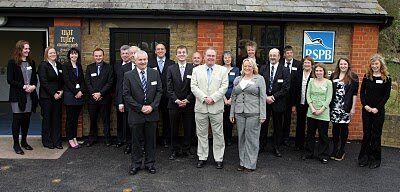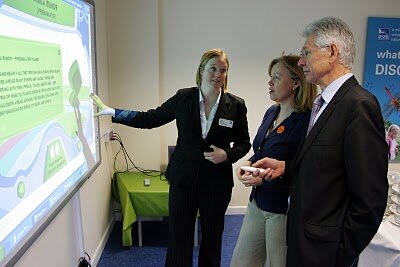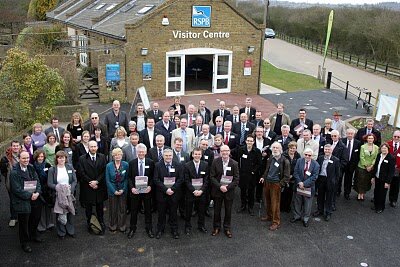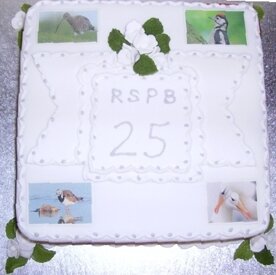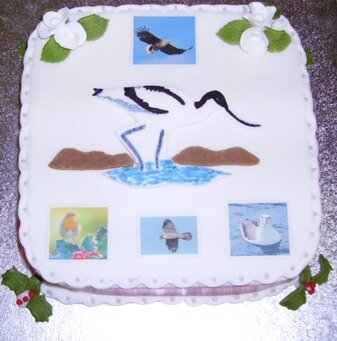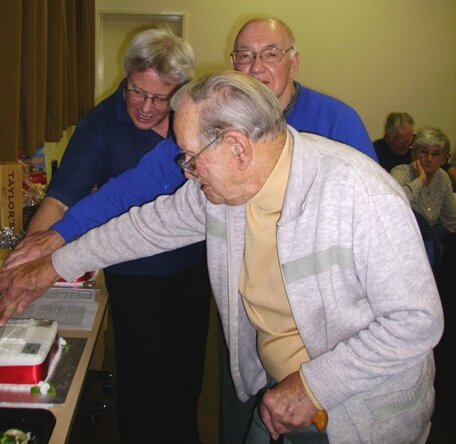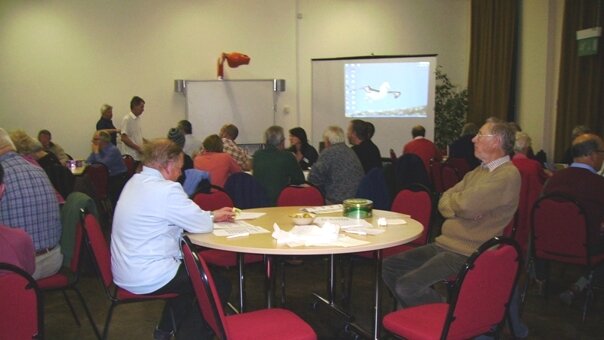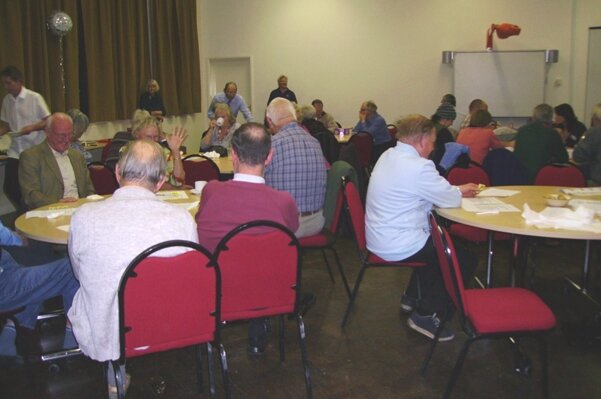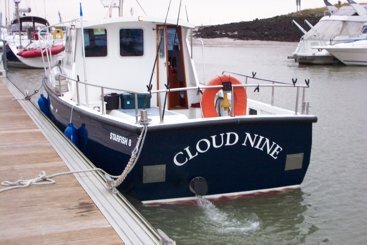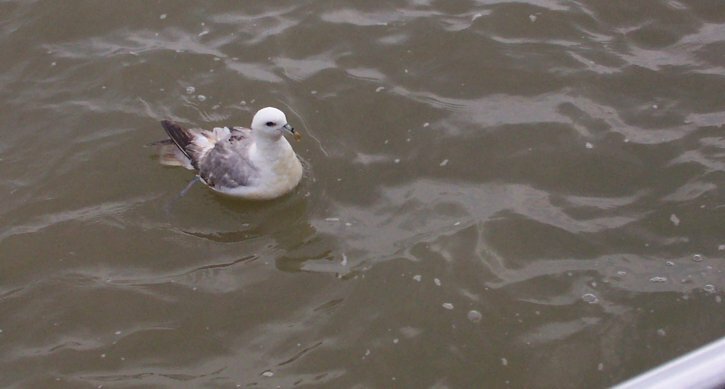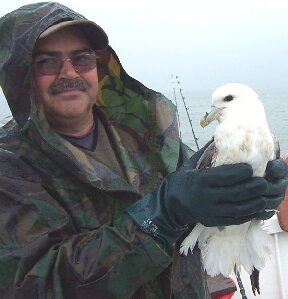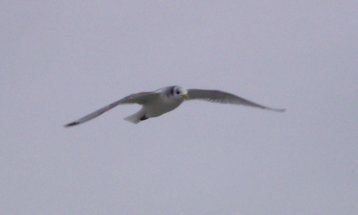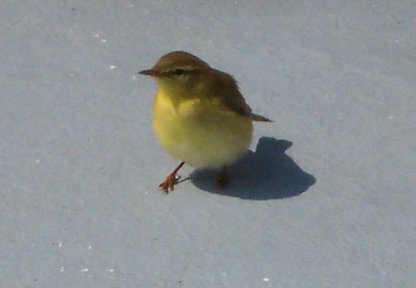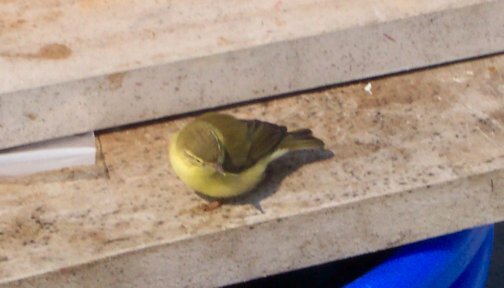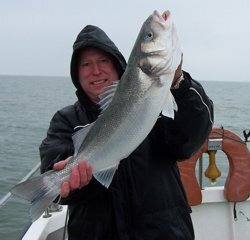Tweets by @seerspb Calling Pin Badge CollectorsThe long awaited Wallasea Island Project badge has arrived - featuring a spoonbill, a bird we aspire to attract to the new marshes and wetlands, this bright badge on a distinctive yellow backing card is available for a limited period and can be bought only from badge boxes in the South East Essex sites - so seek one out now!
The RSPB pin badge scheme is helping to raise £1m for wildlife conservation projects around the UK and overseas - at a suggested donation of £1 per badge, you can see that is a lot of badges and it's a great way to raise funds. If you would like to support the Wallasea Island Wild Coast Project you may get yourself one of our special badges for the usual minimum donation of £1. They will be available from the boxes in the South Essex area, including the RSPB visitor centre at Wat Tyler Country Park. Enthusiastic and motivated volunteers to look after or place boxes for us in shops, cafes, vets, pubs, hotels and leisure centres are always needed. We now need more boxes in the South Essex area to raise money for our local projects so if you would like to help raise funds in your local town or village please get in touch and we'll tell you more. First Southern Emerald Damselfly Record for Essex Found in Local Park29th July 2010 The first record of a Southern Emerald Damselfly has been noted at Wat Tyler Country Park. More details and photographs can be seen on the Tweets of Neil Phillips at : http://my.opera.com/Ukwildlife/Tweets/first-ever-southern-emerald-damselfly-in-essex. Wallasea Needs Willing Hands28th May 2010 Wallasea Island is going leaps and bounds for birds and wildlife, but it's missing one thing its people! The RSPB's Public Engagement Manager on the Island Hilary Hunter, has all sorts of plans and ideas to bring Wallasea Island to life for more than just the local wildlife and the migrating birds. A recent recruit herself, Hilary said: "We'd like to be able to offer guided walks, run family events and develop lots of other ideas to encourage visitors to come and get involved with our exciting project, but we're going to need some troops to help!" She went on to say: "As we enter National Volunteer, Week (June 1st to 7th), what Wallasea Island really needs is a team of energetic and enthusiastic volunteers, with all sorts of skills, to come along and help me make this project buzz." The Wallasea Wild Coast project is an exciting coastal engineering scheme, which will transform the island back to the magical marshland that existed hundreds of years ago. As part of the growing team, you will gain the opportunity to put your skills to use, meeting and inspiring new people while achieving satisfaction from contributing to the effectiveness of RSPB work as this venture develops. The RSPB need all kinds of people, with a variety of talents to compliment the existing work that’s taken place. Volunteers are an essential part of the RSPB. They are at the heart of what it does and achieves. Without the help of over 14,000 volunteers, their work would be greatly diminished. The RSPB was founded by volunteers in 1889 and today they are still at the core of its work, making a huge contribution to the RSPB. If you would like to hear more about how you can help Hilary make Wallasea wild and exciting to more people, why not give her a call on her mobile number 07702 779361, by e-mail on or visit the RSPB web pages http://www.rspb.org.uk/volunteering. Dr Mike Clarke is the new Chief Executive of the RSPB26th April 2010 Dr Mike Clarke is to take over from Sir Graham Wynne who is stepping down after 23 years in senior management at the RSPB. Mike is currently the Conservation charity's Director of Operations, running the delivery of the RSPB's work throughout England, Wales and Northern Ireland. He will take up his new role in late May. Speaking of his appointment, Mike Clarke is keen to pay tribute to his predecessor: "It's been a privilege to work closely with Sir Graham over the last 12 years. His contribution to the RSPB and nature conservation has been immense. "The RSPB is in great shape to tackle the challenges the natural world faces, and let's not be under any illusion, they are huge." Speaking of the timing of his appointment, Mike Clarke said: "My appointment coincides with a series of massive challenges facing the natural world. By 2010 international commitments to halt the decline of biodiversity should have been met – they haven’t been, the losses continue. "The twin challenges of biodiversity loss and climate change must be met by robust and urgent action from Governments around the world; yet this ecological crisis coincides with the one of the biggest economic crises the world has seen. "In the UK we are in the midst of a general election that will shape this country's future, politicians must rise to the challenge and show how they can cut wasteful expenditure that pollutes and damages the environment and invest in protecting nature and all the services it provides." Mike Clarke is clear about the role the RSPB must play: "We have a great record of conservation success – our nature reserves and species recovery projects are making a real difference for an amazing array of wildlife. "We have a great track record of fighting to protect the best places for nature and of making a constructive contribution to a wide range of policies affecting the natural world in the UK and overseas. "Leading the RSPB is a special role – the dedicated staff and volunteers supported by over a million members are the reason for our success. The challenges facing the natural world are so great they require the combined might of all those who care working together. On the global scale we draw immense strength from being part of the BirdLife International partnership. "I want the RSPB to be at the heart of renewal of our precious natural world, the stakes are high and I'm looking forward to the challenge." Sir Graham Wynne reacted to the news of the appointment of Mike Clarke with delight: "Mike has come through a gruelling recruitment process with his vision for the RSPB and his passion for the natural world shining through. He's been at the sharp end of nature conservation for all of his career and his record of delivery is second to none, the RSPB will thrive under his leadership." Dr Mike Clarke’s passion for conservation of the natural world grew out of his childhood love of nature, combined with making a difference through teenage volunteering for Skomer Island National Nature Reserve, the Kent Wildlife Trust, Sandwich Bay Bird Observatory and the RSPB Medway Local Group. Dr Clarkes's scientific background encompasses post-graduate and professional experience of plant and animal ecology, soil science, geology, hydrology, and climate change. He has been a member of the RSPB since he was 14 years old, first volunteering in 1975, he is now a longstanding family member with teenagers active in RSPB campaigning. In his role as Operations Director he has been responsible for delivering RSPB's work across much of the UK over the last 11 years. This includes five English regions, Wales and Northern Ireland, comprising about half of the RSPB's total staff and a third of the Society's budget. During this period visiting numbers to RSPB nature reserves have increased for 1.2m to 1.9m stimulated by the establishment six reserves near to urban areas. During the 90's he was the RSPB's Regional Director for South East England and London. He led a campaign to raise environmental standards in the Greater Thames, by building public support and demonstrating that the natural environment is a key asset for the economy. We succeeded in changing the regional economic policy of the Conservative Government, which led on to the Labour Government’s regeneration strategy for the Thames Gateway. The campaign won an international award for the use of visual communication in business. RSPB Wat Tyler Visitor Centre Official Opening25th March 2010 The RSPB officially opened its doors to an exciting new discovery zone and visitor centre right in the heart of south Essex on 19 March. The RSPB is developing a ten square kilometre landscape here, rich in wildlife and accessible to people.
RSPB’s Chief Executive Sir Graham Wynne, led a special celebration along with The Rt. Hon. Angela Smith, Minister for the Third Sector and representatives from partner organisations. Graham Wynne said: "We have forged some wonderful partnerships through this project at Wat Tyler County Park. We are proud that the RSPB is working alongside friends in many other organisations, creating an exciting new place for people and wildlife." Graham went on to say: "Wat Tyler Country Park is a great place to inspire the children of Essex and the wider community about their local environment. This celebration event is the perfect place to come and sign the RSPB's Letter to the Future, and encourage politicians to create more opportunities for young people to enjoy nature. If we fail to act now, we'll miss nurturing the environmental champions of tomorrow."
State-of-the-art CCTVs will beam live images into the centre, revealing some of the secrets of the natural world that lies right at the heart of this urban sanctuary. These CCTV pictures will also be beamed straight to this website and can be viewed here. The RSPB acknowledges the vital funding that has made this exciting project possible – Homes and Communities Agency and Essex County Council's Parklands Programme, Wat Tyler Heritage Interpretation Project, Veolia ES Cleanaway Pitsea Marshes Trust, Natural England Access to Nature and BIG Lottery Fund.
Unique Partnership Plans a Better Future for Thames' Wildlife02nd July 2009 An innovative audit of wildlife in the Thames is being launched at the House of Commons today, heralding a major advance in the relationship between conservation and commerce. The project is the result of a unique collaboration between the Port of London Authority (PLA) and the Royal Society for the Protection of Birds (RSPB). It's the first time an agreement of this kind has been signed between a port authority and an environmental charity. The comprehensive review, the Conservation Management Framework (CMF), pulls together key information on the Thames' wildlife into an interactive website. It covers the diverse range of species found in the Thames and all its habitats. The wildlife includes dolphins, seals, fish, marine invertebrates and populations of internationally important waterbirds. By assessing how the PLA's operations can affect these populations, both in normal circumstances and in possible emergencies like vessel collisions, the framework enables the PLA to balance the dual interests of commercial shipping and conservation. It also outlines how the statutory body can best manage the wide range of habitats that fall under its jurisdiction, which runs 95 miles from Teddington in West London, then downstream to the outer limits of the Thames Estuary. RSPB Chief Executive Graham Wynne said: "The framework is the culmination of years of debate between conservationists and commercial shipping. Ten years ago there would have been a very definite line between the two but we now have the tool we need to bring these sometimes disparate interests closer together. "It’s a major step forward and has been driven by the PLA’s desire to marry these two crucial sides of life on the Thames. "What’s more, the project brings together all the different knowledge about the tidal Thames for everyone to see. By doing this, it shows how important the Thames Estuary is for wildlife." The PLA is the statutory body responsible for navigation and safety in the Thames, a stretch of water that supports some of UK’s most important and sensitive wildlife, plus one of the biggest arrays of internationally protected habitats in Europe. The PLA celebrates its centenary this year and Chief Executive Richard Everitt sees the agreement with the RSPB as part of the continuous improvement in its work to manage the tidal Thames. He said: "The coast, estuaries and rivers are some of our most sensitive environments and are also attractive to many different users. That is certainly the case for the Thames, where we have over 10,000 sea-going vessels a year passing inter-tidal areas important to wildlife, a growing commuter trade and extensive sporting pursuits. Over the last few months, we have worked through the challenges of managing these differing interests with the RSPB. Their input, combined with the guidance contained in the Conservation Management Framework, will inform our thinking on how we tackle issues in the future. "Some fifteen or twenty years ago you would have struggled to find a port authority working with an environmental group. Today there is recognition that working together, developing mutual understanding and seeking compromise is more effective than conflict. This is the start of a journey together with the RSPB. It may not always run smoothly, but we have established the foundations for debating and resolving conflicts of interest in the future." Gravesham MP, Adam Holloway, is hosting today's reception at the House of Commons. He said: "The Thames is an amazing resource for London. Just take a look at the river at Gravesend and you get a snapshot of the uses it attracts. You'll see large commercial ships, sailing barges, cruise ships, rowing boats, birds, fish and even seals. "Making sure the river and its environment is fit to continue to support these uses is a challenge. That’s why this unique link-up is so important. More than that, it signposts how others might tackle similar dilemmas in the future." To view the CMF visit www.pla.co.uk The South East Essex RSPB Local Group Celebrates its 25th AnniversaryJanuary 2009 December 2008 saw the South East Essex Group celebrating its 25th anniversary with a big party held in its indoor meeting hall at the Blenheim Centre, Blenheim Schools Leigh on Sea. The event was exceptionally well attended with around 100 people braving the cold weather to join in the party. A truly wonderful buffet was provided for us by Food for Thought (thank you Lesley and Robert). The evening was taken up with speeches from attending RSPB officials and local group members, a really superb raffle, quizzes and fun items. Two really fantastic and delicious cakes were made for us and donated free of charge by Jill Warner and we thank her very much indeed for these. One of the cakes was consumed on the night and the other was auctioned and made £25 for our charity account.
We are very lucky indeed that we have been able to sustain our group and loyal membership base and we are now looking to 2009 with increased confidence, good finances, interesting talks, well supported coach trips and a strong and hard working committee. I cannot thank all of you enough, here's to the next 25 years!
Web Author. Thames Estuary Cited As One Of The UK's Most Internationally Important Waterbird Sites19th November 2008 Waterbirds in the UK 2006/2007, a report released yesterday [Monday November 17] places the Thames Estuary in the top five internationally important sites in the UK for the high number of waterbirds found there during winter or migration. The RSPB sees this as further confirmation that the idea of an international airport anywhere in the Thames Estuary is a complete not starter. The study, which began counting waterbird numbers in the 1960s in response to a proposed Maplin Sands Airport in Essex, found 12 species in the Thames Estuary in internationally important numbers – the highest concentration anywhere in the South East. The diversity of its waterbird species places the estuary in the top five internationally important sites in the UK, out of 143 recorded. Chris Corrigan, RSPB South East's regional director, said: "If ever Boris needed proof of the environmental cost involved in building a Thames Estuary airport, this report – which actually came about in response to a past airport proposal – is it. For years we have been pointing to the estuary's importance for countless species and here, in black and white yet again, is proof of just how remarkable the area really is for wildlife. "The nearby Swale and Medway Estuaries, similarly recognised by this report for their international importance, will also lose out if an airport went ahead. If Boris thinks building an airport anywhere in this area is viable, this report shows he needs to think again." The study finds the Thames Estuary to be the only internationally important site in the UK for the Amber Listed ringed plover, and the second most internationally important site in the UK for dunlin, found to be at its lowest level nationally since the 1970s." Globally significant populations of the UK's two species of godwit – types of wading bird – were also found in the Thames Estuary. Both show differing trends across the UK, with the black-tailed godwit – a bird of global conservation concern [see notes] – reaching its highest level; while the closely-related bar-tailed godwit, hit its lowest level to date, after a five-year decline. Teal and shoveler, also declining across the UK, are still found here in internationally important numbers, as are redshank – a type of wader now at its lowest level nationally for 20 years. Elsewhere in Kent, the Medway Estuary is cited for internationally important populations of avocet, pintail, and black-tailed godwit. The nearby Swale Estuary is noted for wigeon, teal black-tailed godwit and pintail. Across the South East, 12 key sites were found to host internationally important numbers of waterbirds. Dr Mark Avery, the RSPB's conservation director, said: "This report shows that our estuaries and wetlands are wonderful places for wildlife and they deserve to remain so. "These sites, almost like airports, are vital staging posts for international travellers. Although climate change and development threaten these wonderful sites, the RSPB will continue to do everything in its power to protect them." "We are blessed with years of information, chronicling the ups and downs of these international travellers. This information must present a wake-up call to protect these sites, rather than provide a record of how important they once were." The report identifies climate change – specifically milder winters – as underlying many of the observed changes, as birds shorten their migratory flyways and spend the winter in other countries closer to their breeding grounds. Dr Debbie Pain, director of conservation at the Wildfowl & Wetlands Trust, said: "WWT reserves offer safe roosts and a plentiful food source to some 200,000 waterbirds every winter. At this time of the year, the UK's estuaries, marshes and wetlands throng with the arrival of ducks, geese, swans and wading birds, making the UK one of the most important countries in the world for some of these birds. "However, we are becoming increasingly concerned about the declining numbers of some populations. Conservation action is needed urgently to reverse these declines." Dr Andy Musgrove, head of the Wetland Bird Survey at the British Trust for Ornithology, BTO said: "An army of thousands of volunteer birdwatchers has collected counts of wetland birds for over 60 years from around the country. These counts have proved invaluable time after time, whether investigating the potential impacts of industrial developments, assessing the likely effects of climate change or looking into the influence of introduced species on our native wildlife." "Here in the UK we are extremely fortunate to have such a dedicated team of skilled volunteers who are willing to give up their time to provide this vital information. It is thanks to them, and the high quality data they provide, that decisions affecting our internationally important populations of waterbirds can be based on sound scientific evidence." David Stroud, JNCC's Senior Ornithologist, said: "Maintaining the Wetland Bird Survey is essential to obtain good data on the trends of UK's waterbirds. Information on the status of these birds informs us about pressures not only at local sites here in the UK, but also about changing conditions on distant breeding grounds in the arctic – currently threatened by climate change." Research is needed to determine whether declines are due to birds short-stopping (that is, birds wintering closer to their breeding grounds, and hence occurring in the UK in smaller numbers) or whether they are 'real' global population declines. The report is published by the British Trust for Ornithology (BTO); Wildfowl & Wetlands Trust (WWT); Royal Society for the Protection of Birds (RSPB); and the Joint Nature Conservation Committee (JNCC). The Taming of 'Old Bob'09th May 2006 Chris Blake owns Cloud Nine, which is private boat not a charter boat and he just takes out friends and their friends etc. I have known Chris’s for over 25 years and we are both very keen fishermen and now enjoy birding, so you can imagine that we get a lot out of every trip. In actual fact it is ‘Old Bob’ the Fulmar that got me into bird watching. Chris pointed out our friend and said “that is a Fulmar” and I said “no it’s not it’s a seagull, no such thing as a Fulmar your making it up”. I went and bought a bird book to look it up and prove him wrong and it went from there.
Yes it is a fantastic event when our friend the Fulmar turns up. I have to say that 'Old Bob' does have his moods not always coming into the boat or turning up at all, but when he does he always spends at least half a day with us flying around and eating our bait. We are therefore not necessarily convinced that it is 'Old Bob' that turn’s up each time. Someone with a keener eye for identification would be able to tell I’m sure, but a Fulmar is a Fulmar to us. He is usually on his own or with one other, but we have had four of them and it was great. We even had two common terns float past sitting on a plank of wood squeaking away to each other, two Gannets have flown by at distance then another two circled the boat as we brought in a fish... and then the real bonus of the Leach’s Petrel which flew close by... fantastic. The mark where we fish varies but he (or a Fulmar) manages to find us. The habits of the bird however are often the same he flies really low, skimming the water eventually gliding in and landing to the side of the boat, always to port!! We throw a lump of fish and he drifts down in the tide eating it. Depending on the size of the meal he sometimes drifts out of sight. Then we can see him coming back, swooping in again to the same place. If we do not have anything at the time he allows himself to drift to the stern just out beyond the lines (for good reason as you will see) and then keeps up a good rate of paddling to keep pace with the tide. When he tires of this he drifts down and when rested flies up to the port side again and the process starts again, while he patiently waits for us to catch a small fish. We fish one rod each with worm bait to catch small whiting or pouting for the Fulmars. Old Bob's introduction to coming into the boat was a result of an accident. The Fulmars swoop very low around the boat and 'Old Bob' hit one of the lines about two years ago and was unable to free himself. I will never forget this day, the sea was flat calm and the fishing was fantastic. The Fulmar had decided to hit the line at slack water, which was lucky as we were able to reel him in very easily and slowly against no tide resistance. What amazed us was that after an initial panic he was still and allowed himself to be picked out off the water, no pecking no wild flapping. We were able to quickly free him by cutting the line and he was then placed on the engine cover inside the boat to allow him to rest and recover. We expected him to fly off as he was not damaged in anyway because he had been so calm. We were however a bit concerned when all he did was stand there slightly ruffling his feathers. Suddenly one of the rods had a tremendous bite and our concentration turned to stopping the rod going over the side. I moved my rods out of the way and the fish was played in by Chris. I think it was a largish Bass but can't recall exactly, mainly because Chris caught it and I was jealous. We are not sure how many trips passed without seeing a Fulmar again and we did not give it anymore thought, but one day he (or another Fulmar) turned up. Doing the same routine as before which made us think it was the same bird. This time it came closer to the boat, landing out away and then paddling in. We tossed bait and small fish only about two feet to him.
Then towards the end of the day he took a squid from Chris’s hand. He swam away quickly but had moved on in terms of bravery. A couple more trips passed and again no sign of ‘Old Bob’, we think weather plays a role, we see them invariable on a calm day. However at last we got another visit and again the usual routine. To our surprise while just sitting quietly watching the rods and scaring the life out of me, he flaps up from the portside onto one of the safety bars that go round the gunnels of the boat, clearly impatient that he had not had a fish for a while. I handed him a squid very slowly which he took and making us duck flapped and flew back into the sea. We go fishing a lot, Chris goes out nearly every week and I join him whenever I can and including Sunday he has only come into the boat three times each time when I have been with Chris. This is no coincidence as I get rid of as much squid feeding the Fulmars as I do in hope of catching a fish. The second time he came in we tried to get him to stand on a gloved hand but he would not perform so Chris went to hold him and to our amazement he allowed it eventually taking a fish from my hand. Chris placed down on the engine cover and he finished the fish before taking off making us dive for cover again.
On this day we remembered the camera and as you can see he posed calmly for his close up. He did not want a fish though until we tossed one in the water for him. As you can see Chris is wearing thick plastic gloves because about a year ago we had another Fulmar get caught in a line and this one panicked like mad and pecked a lot with his huge bill and, as you know, it’s got a sharp point at the end. We had to let him go quickly as he was clearly upset and as I returned it to the sea it set off like a spooked swan paddling across the top of the water eventually taking off and never looked back. Old Bob is just not worried and we believe we are not the only boat that gets a visit; the strange thing is we have not heard others tell a similar story, so it is a mystery. Why ‘Old Bob’? He was named on the day we caught him in the line. It had been a great days fishing, calm sea’s, a tan of lobster proportions and a close encounter with a wonderful sea bird. It was only fitting to end such a day with a pint or two in the Shepherd and Dog public house. On this day the guest ale was Ridley’s 5.1% ‘Old Bob’ and a glass was raised and a name awarded to our mate ‘Old Bob’ the friendly Fulmar. Some of our other photographs;
Author: Graham Saunders And Finally...The WWT is Mourning the Loss of Kerry the GooseThe WWT has tracked Kerry the Brent Goose by satellite all the way from Ireland to an Eskimo's kitchen in Arctic Canada. Kerry had safely completed the arduous 4,500-mile journey, only to be shot by a man out hunting. He was found by researchers who tracked the signal from a transmitter on Kerry's back to the Eskimo's home on remote Cornwallis Island. After knocking on the door they were led to his freezer where Kerry lay still wearing his £3,000 electronic tracker. Kerry was in the hunter's freezer. He hadn't been plucked and the transponder was still on him. The hunter was somewhat surprised and he didn't know what the device on the goose's back was. Kerry was one of six Irish Light-Bellied Brent Geese being followed on their migration routes by the British-based Wildfowl and Wetlands Trust. Are You a Birdwatcher?06th July 2002 Many people ask us what makes a birdwatcher, if you answer yes to most of the questions below you can consider yourself a dedicated and committed birdwatcher.
(list taken from the Internet) South African Stork Arrested for Spying!12th November 2001 Police in Burundi have arrested a bird suspected of spying. The South African stork, which had a satellite tracking device attached to its body, was found by villagers after it injured a wing. The alleged spy is called Saturn and was a member of a flock of five that formed part of a University of Cape Town research programme to monitor the migration patterns of the birds. The other four birds, which were also fitted with the same devices, died in February after heavy rains in Mozambique. Saturn apparently crash landed in a village in Muyinga Province in north-eastern Burundi after injuring a wing. Upon closer inspection, local villagers were intrigued by the suspicious looking electronic device strapped to the bird's body. Understandably, there was great consternation and the bird was immediately handed over to the local police for investigation. The Burundian police then enlisted the assistance of English-speaking Mary Murphy who lives in the area. Fortunately, the satellite device had the e-mail address of Professor Les Underhill of the University of Cape Town written on it. Ms Murphy e-mailed Professor Underhill saying the sick bird, together with its suspicious device, had been taken into custody. She added that Saturn's right wing was healing and that he was being cared for by the police. There was no mention whether the bird was being held under 24-hour armed guard in the police cells. Professor Underhill said he understood the police's concerns, especially in today's environment of terror attacks. "The device looks pretty space age with an aerial and a little solar cell to charge the battery," he said. But he remains hopeful that both the bird and the satellite device will eventually be returned unharmed. With thanks to the BBC |
Page last updated:
Web Design Graham Mee. © Copyright of all pages South East Essex RSPB Local Group. All images copyright of owners
The Royal Society for the Protection of Birds. Registered charity no 207076
Please read our privacy and visitor policy
Translate this page: 





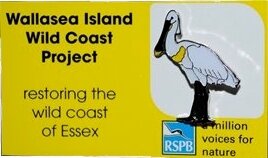 Now and again the RSPB pin badge selection adds a special edition badge. These rapidly become a collector's item and old and rare badges can be worth a tidy sum. If you are a keen collector - there are now over 170 animals, birds and plants to pin to your display board - this is one you won't want to miss. You may also be interested in the Collectors' Club. The club holds stocks of most of the badges the RSPB has ever produced, old and new, so if you're after a certain badge and can't find it, we probably have it. Contact the Collectors’ Group on 07802 293417, or e-mail: to find out more.
Now and again the RSPB pin badge selection adds a special edition badge. These rapidly become a collector's item and old and rare badges can be worth a tidy sum. If you are a keen collector - there are now over 170 animals, birds and plants to pin to your display board - this is one you won't want to miss. You may also be interested in the Collectors' Club. The club holds stocks of most of the badges the RSPB has ever produced, old and new, so if you're after a certain badge and can't find it, we probably have it. Contact the Collectors’ Group on 07802 293417, or e-mail: to find out more.